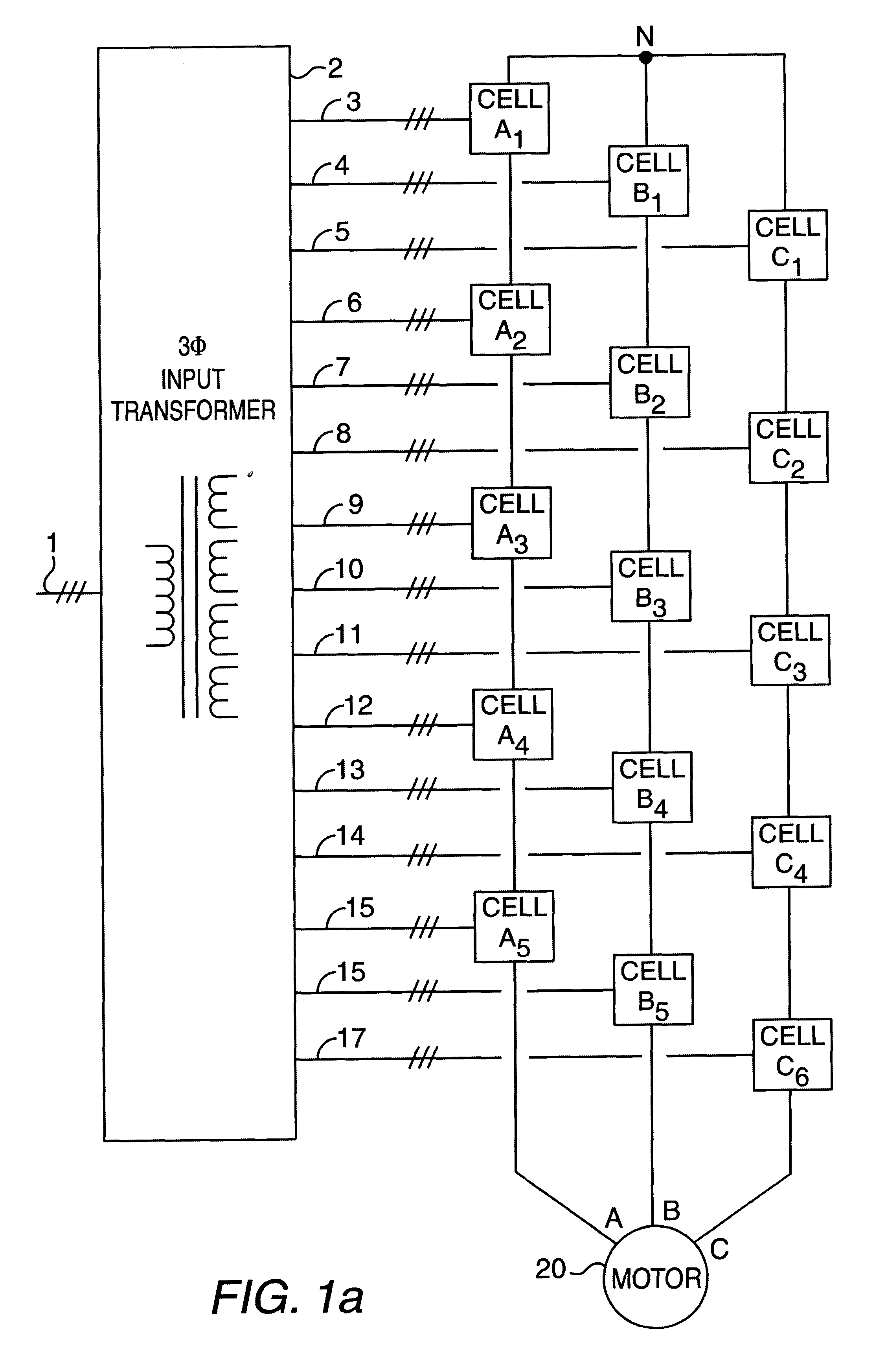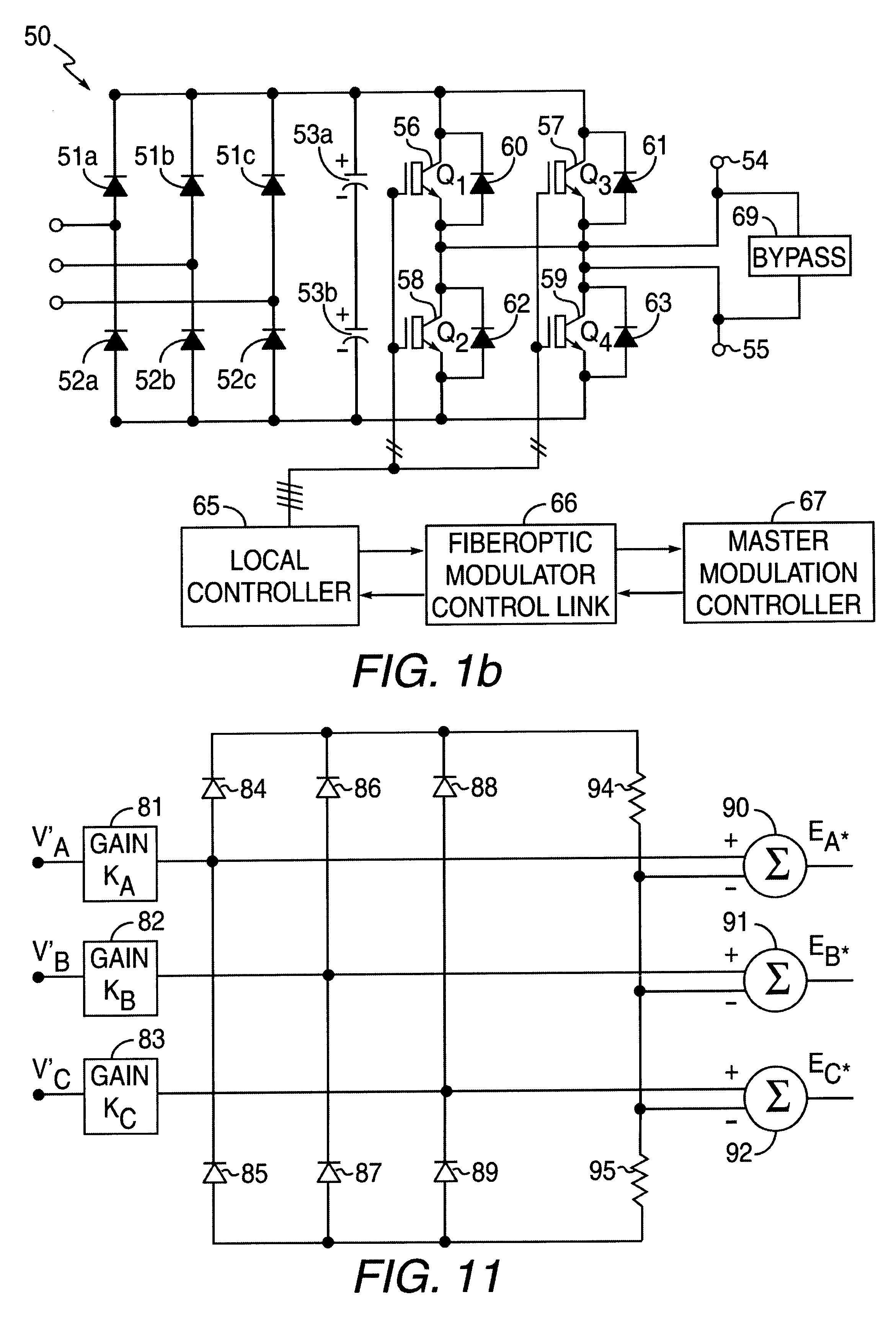Multiphase power supply with series connected power cells with failed cell bypass
a power supply and series connection technology, applied in the direction of dc-ac conversion without reversal, switch power arrangement, contact mechanism, etc., can solve the problems of unbalanced output, inoperable drive, imbalanced line conditions,
- Summary
- Abstract
- Description
- Claims
- Application Information
AI Technical Summary
Benefits of technology
Problems solved by technology
Method used
Image
Examples
Embodiment Construction
FIG. 1a shows a power circuit diagram for an AC drive. This is a typical arrangement in which the invention can be utilized, however, other drives and power supplies can also utilize the apparatus and method of this invention. A three-phase incoming line 1 feeds into a power transformer 2. As shown, power transformer 2 may be of any configuration, and in some preferred embodiments will be the multiple winding three-phase isolation transformer as shown in U.S. Pat. No. 5,625,545. Such a transformer may have a primary winding which is star or mesh connected, which is energized from the three-phase incoming line 1. The transformer may then energize a number of single or multi-phase secondary windings. In presently preferred embodiments, there will be a number of secondary windings each corresponding to a respective converter or power cell in the drive. It is also preferred that the windings be preselected to certain degrees of electrical phase such as taught in the aforementioned paten...
PUM
 Login to View More
Login to View More Abstract
Description
Claims
Application Information
 Login to View More
Login to View More - R&D
- Intellectual Property
- Life Sciences
- Materials
- Tech Scout
- Unparalleled Data Quality
- Higher Quality Content
- 60% Fewer Hallucinations
Browse by: Latest US Patents, China's latest patents, Technical Efficacy Thesaurus, Application Domain, Technology Topic, Popular Technical Reports.
© 2025 PatSnap. All rights reserved.Legal|Privacy policy|Modern Slavery Act Transparency Statement|Sitemap|About US| Contact US: help@patsnap.com



